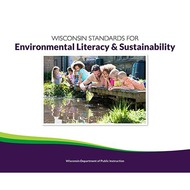
(View Complete Item Description)
Students are introduced to the concepts of biomimicry and sustainable design. Countless examples illustrate the wisdom of nature in how organisms are adapted for survival, such as in body style, physiological processes, water conservation, thermal radiation and mutualistic relationships, to assure species perpetuation. Students learn from articles and videos, building a framework of evidence substantiating the indisputable fact that organisms operate "smarter" and thus provide humans with inspiration in how to improve products, systems and cities. As students focus on applying the ecological principles of the previous lessons to the future design of our human-centered world, they also learn that often our practices are incapable of replicating the precision in which nature completes certain functions, as evidenced by our dependence on bees as pollinators of the human food supply. The message of biomimicry is one of respect: study to improve human practices and ultimately protect natural systems. This heightened appreciation helps students to grasp the value of industry and urban mimetic designs to assure protection of global resources, minimize human impact and conserve nonrenewable resources. All of these issues aid students in creating a viable guest resort in the Sonoran Desert.
Material Type:
Lesson Plan
Authors:
TeachEngineering.org,
VU Bioengineering RET Program,,
Wendy J. Holmgren



